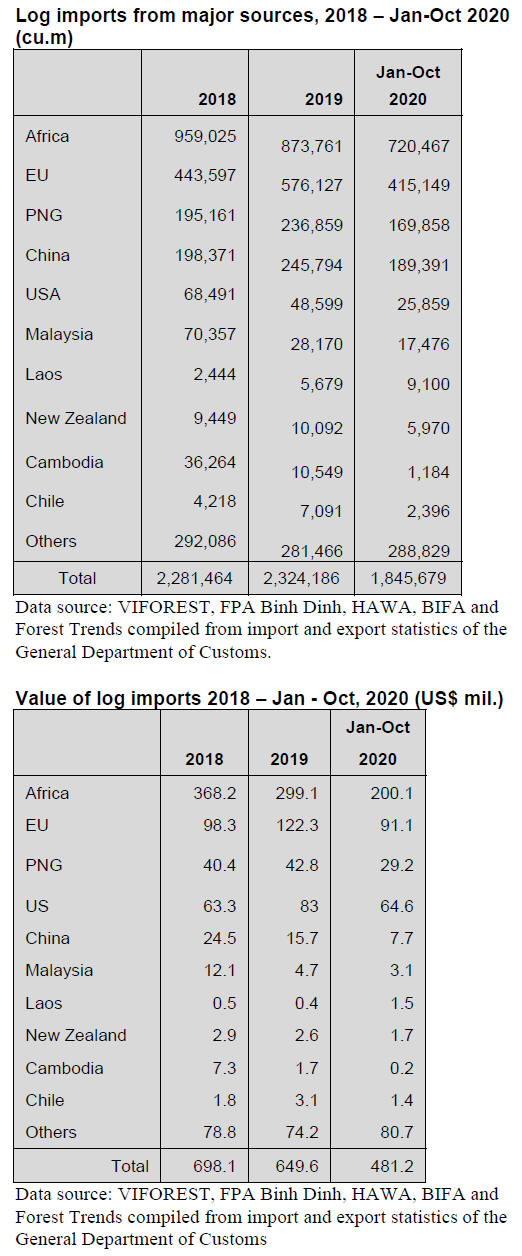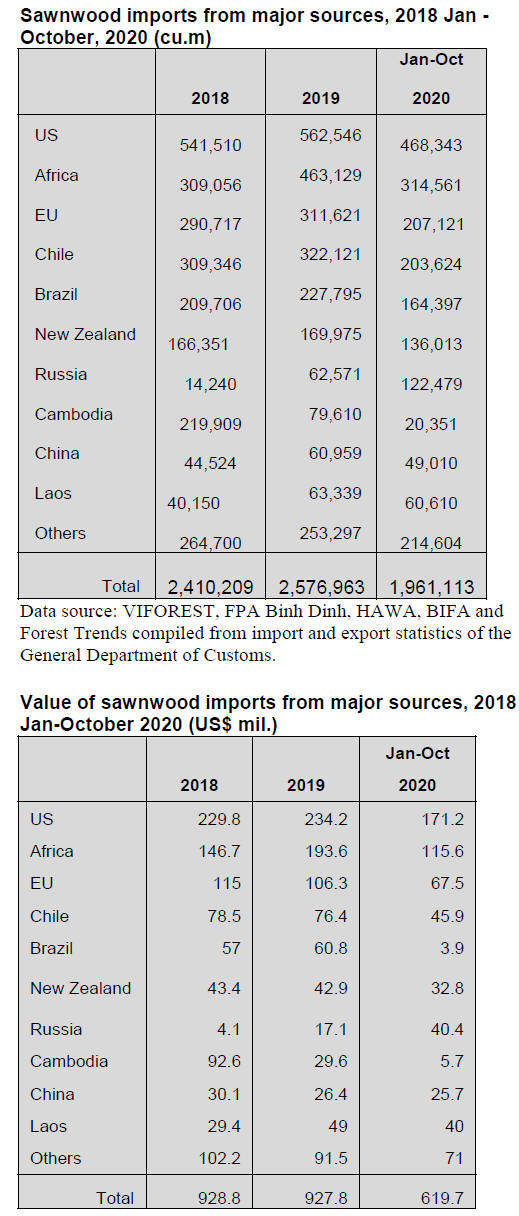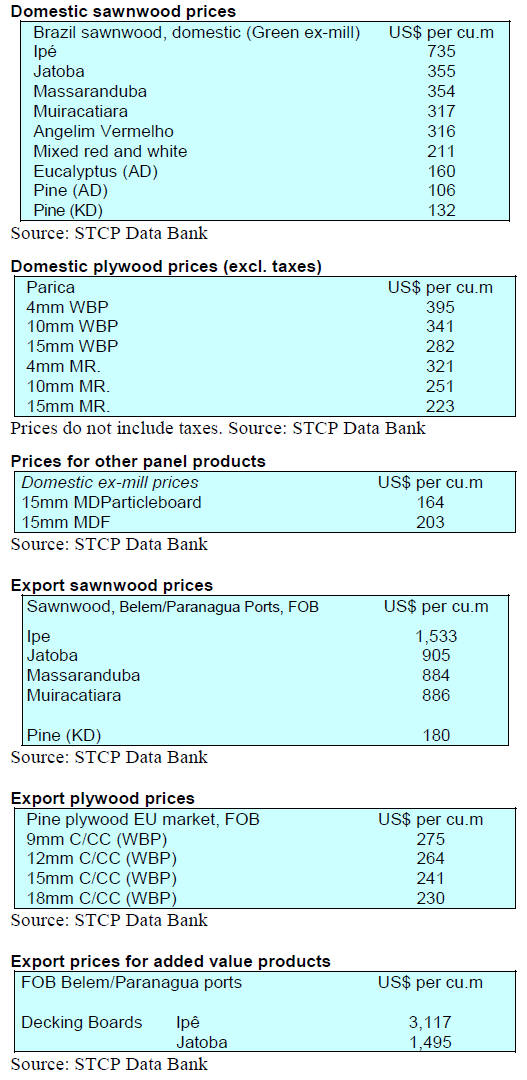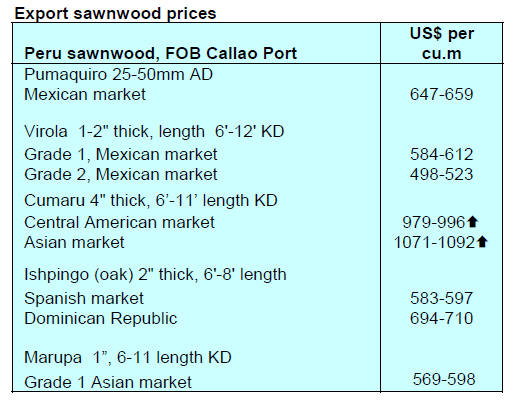4.
INDONESIA
International trade agreements will
help drive
economic recovery
The Indonesian economy contracted 2% year-on-year in
2020. This was at a slower pace than projected by the
government (1.7 to 2.2%) according to Suhariyanto Chief
of the Central Statistics Agency (BPS).
In related news, the Minister of Trade, Muhammad Lutfi,
said International trade agreements will drive the
economic recovery and he highlighted the efforts to raise
non-oil and gas exports to help Indonesia's battered
economy.
Existing international trade agreements include the
Regional Comprehensive Economic Partnership (RCEP),
Indonesia-Korea Comprehensive Economic Partnership
Agreement (IKCEPA), Indonesia-Pakistan Preferential
Trade Agreement (IP-PTA) and Indonesia-Australia
Comprehensive Partnership Economic Agreement (IACEPA).
Indonesia's trade balance in 2020 posted a surplus of
US$21.7 billion, the highest since 2012. However, the
large surplus was because of a sharp decline in imports. In
2020 exports fell 2.6% year-on-year while imports
plunged over 17%.
The Minister said to increase exports it will be necessary
to strengthen bilateral ties with the US and China as they
are strategic partners for Indonesia.
Between January and November 2020 Indonesia's exports
to the US rose 3.6% compared to the same period in the
previous year. Exports were dominated by garments
(19.4%), electronics (10%) and rubber products (8%).
The Minister noted that during the pandemic Indonesia
received many orders for electrical products as well as
furniture from the United State such that furniture exports
grew almost 12% to US$2.3 billion.
Indonesia's trade and investment cooperation with China is
strong because of the ASEAN-China Free Trade
Agreement (ACFTA) and the Regional Comprehensive
Economic Partnership (RCEP) schemes.
Between January and November 2020 Indonesia's exports
to China increased by almost 11% year on year and were
dominated by iron and steel (24%), minerals (21%) and
palm oil (11%).
See:
https://www.kemendag.go.id/id/newsroom/pressrelease/tingkatkan-ekspor-indonesia-terus-jalin-hubunganbilateral-dengan-as-dan-tiongkok-di-tengah-perang-dagangkedua-negara-1
Private sector optimistic on 2021 sales
A major wood products manufacturer has indicated that it
is optimistic that 2021 sales will improve as the US
economy picks up speed. The basis for this optimism also
stems from the shift of US importers away from Chinese
sources to Indonesia among others.
To take advantage of arising opportunities companies are
planning to increase production which will be good news
for employment in Indonesia.
See:
https://industri.kontan.co.id/news/integra-indocabinet-woodoptimistis-pendapatan-naik-20-di-tahun-2021
Development of industrial plantations for bioenergy
The Minister of Environment and Forestry (LHK, Siti
Nurbaya, has explained details of Indonesia's agreed
Nationally Determined Contribution (NDC) and the
agreed target for greenhouse gas (GHG) emissions. To
achieve the targets the Ministry will encourage Industrial
Plantation Forests (HTI) for Bioenergy purposes,
utilisation of micro-hydro technology, utilisation of waste
for power-gen and utilisation of geothermal resources.
Another aspect of support from the Ministry will be the
implementation of policies for the development of energy
plantation forests.
See:
https://www.jpnn.com/news/menteri-siti-dorongpengembangan-hutan-tanaman-industri-untuk-bioenergi?page=4

5.
MYANMAR
Reports from Myanmar will
resume as soon unhindered
communication with the country is possible.
In response to the situation in Myanmar the Programme
for the Endorsement of Forest Certification (PEFC)
included a statement on it website saying:
“At PEFC, we are extremely concerned about the recent
developments in Myanmar. In response, we are seeking
assurances from the Myanmar Forest Certification
Committee (MFCC - the national member for PEFC in
Myanmar) and the one PEFC chain of custody certified
company in the country that the rights of workers and
trade unions are not being infringed.
We also seek assurances that the revenues of the certified
forestry industry are not being used to finance human
rights violations in Myanmar.
It is of the utmost importance to us that none of the
safeguards of sustainable forest management and chain of
custody certification are violated in these challenging
times. The Secretary General and the PEFC International
Board continue to monitor the situation and will not
hesitate to take due action as required.
We have been working with stakeholders in Myanmar for
several years, supporting the country as it
moves towards the sustainable management of its forest
resources to advance equitable and sustainable
development.
MFCC is in the process of developing its national forest
certification system, in line with PEFC requirements. As
this national system is not yet endorsed by PEFC, there are
currently no PEFC sustainable forest management
certificates in the country.”
See:
https://pefc.org/news/pefc-statement-on-the-currentsituation-in-myanmar
6. INDIA
Exports rise, trade
deficit narrows
India‘s Ministry of Commerce has reported January
exports increased just over 5% year-on-year to US$27
billion, lifted mainly by growth in the pharmaceutical and
engineering sectors. The trade deficit in January narrowed.
Imports in January 2021 rose 2% to US$42 billion.
Kailash Babar, writing for The Economic Times at the end
of January, reports that property registrations in the
country’s biggest real estate market, Mumbai, continue to
rise driven by the combined impact of low home loan
rates, discounts and the recent reduction in stamp duty
charges.
The number of new home registrations in January was up
over 60% year on year according to the office of the
Inspector General of Registration in Maharashtra. This is
the highest increase in January registrations 2012.
However, according to property consultants Knight Frank,
while January registrations surged real estate companies
are suffering and their stock prices have been trending
down as the real estate market remains weak. The
upcoming budget will provide a clue as where the housing
market is heading.
India 2030 – Report from CREDAI
The Confederation of Real Estate Developers’
Associations of India (CREDAI) has issued a report
entitled INDIA 2030 EXPLORING THE FUTURE
looking at growth drivers and how demographic changes
will drive the real estate sector. CREDAI represents
private real estate developers with a vision of transforming
the Indian real estate industry.
The report offers the following observations:
India’s cities will account for nearly 40% of our
population by 2030
By 2030, India’s urban population will contribute
as high as 75% of the GDP, up from 63% at
present
Delhi might overtake Tokyo as the world’s
largest urban agglomeration by 2030
India will have 68 cities with a population of
more than 1 million; up from 42 today
India’s required annual spending on infrastructure
will touch 7-8% of its GDP
The report says by 2030, 9 out of 10 Indians over the age
of 15 will be shopping online and online retailers will have
a much larger share of the retail sector.
Number of households to touch 386 million by
2030, almost 40% of Indians will be urban
residents
By 2030, residential real estate has the potential
to almost double from the current stock of 1.5
million units in key cities
Affordable housing to remain the dominant
segment; total of 10 million PMAY (U) units to
be delivered by 2020 itself.
The report says “India is home to one of the youngest
populations in the world. If directed correctly its young
working class (with a median age of 31.4 in 2030) has the
potential to achieve significant productivity gains, thereby
bolstering economic growth. However, the growth benefit
of this demographic dividend would not be automatic. A
lot depends on how well this working population can be
trained and whether enough jobs are created to employ the
new labour force additions every year”.
See:
https://credai.org/console/public/upload/4de5a183620d1ae193c813f2d20c7dec.pdf

Plywood
Century Plyboards has reported that its new veneer plant
in Gabon, operated by the Company's wholly owned
subsidiary, Century Gabon SUARL, has commenced
commercial production. The mill has a daily operating
capacity of 200 cubic metres.
See:
https://www.business-standard.com/article/newscm/century-gabon-suarl-starts-commercial-production-at-newunit-in-gabon-121020800961_1.html

7.
VIETNAM
Log and sawnwood imports
Vietnam has become a leading wood product manufacturer
with increasing imports of logs and sawnwood in terms of
volume, variety and supply sources. In the early 2000s
logs and sawnwood were imported into Vietnam from 40 -
45 countries. Today, logs and sawnwood are imported
from over 100 countries and import volumes and the
number of imported species have increased.
In 2012 the volume of logs and sawnwood imported into
Vietnam was reported at 2.4 million cu.m. In 2020, this
figure is forecast to have increased to nearly 5 million
cu.m.
Annually, Vietnamese enterprises spend about US$450
million to import logs and US$750 million on sawnwood.
In general, the average of both logs and sawnwood
imports has tended to decline gradually due to the
increasing importation of plantation timber species and
utilization of lower priced species.
The US, New Zealand, Africa (about 20 countries). EU
and Chile are the main log and sawnwood suppliers to
Vietnam accounting for over 70% of total imports in 2019.
Log imports
On average, the number of countries/territories exporting
logs to Vietnam varies between 70–75 yearly. The top 5
log suppliers for Vietnam are Africa, EU, PNG, US and
China. These 5 suppliers share about 82% of the total
import in the first 10 months of 2020.

In 2019, among the countries that exported log to
Vietnam, there were 5 countries with export of over
100,000 cu.m led by Cameroon and followed by Belgium,
the US, PNG and Germany.
In the same year there were 14 countries selling over
50,000 cu.m and 24 countries with over 10,000 cu.m.
Sawnwood imports
There are approximately 100 countries exporting
sawnwood to Vietnam each year. As was the case with log
imports the number of sawnwood suppliers has not much
fluctuated in recent years.
The top suppliers of sawnwood include the US, Africa,
EU, Chile, Brazil, New Zealand, and Russia. These seven
together shared 82% of total sawnwood imported into
Vietnam in the first 10 months of 2020.

In 2019, there were 5 countries supplying of over
100,000
cu.m of sawnwood each to Vietnam, including the US,
Chile, Brazil, Cameroon and New Zealand, 11 countries
supplied over 50,000 cu.m and 32 countries supplied of
over 10,000 cu.m.
Timber species imported into Vietnam
As imports increased so did the number of source
countries and species. Data provided by the General
Department of Customs lists imported species with
scientific names. Data is available showing species
imported into Vietnam from the beginning of 2012. In
summary:
2012: 340 species were imported into Vietnam;
2013: 360 species, including 98 species imported
for the first time against 2012;
2014: 429 species with 115 new species;
2015: 460 species, including 114 new species;
2016: 515 species, including 140 new species;
2017: 615 species, including 249 new species;
2018: 651 species, including 198 new species;
2019: 418 species, including 85 new species;
First 10 months of 2020: 488 species.
Imports from Africa show the most diverse range of
species and new species are added to the list every year. In
2012, Vietnam imported only 65 species from Africa,
while in 2017 the number of species imported from this
source increased to 175 and in the first 10 months of 2020
it jumped to 122 species.
The number of species imported from Africa increased
sharply between 2012-2017 and then dropped. This
change was a reflection of the decline in the volume of
logs and sawnwood imports into Vietnam. The second
largest supplier of logs and sawnwood in 2012 was Laos
and Vietnamese importers imported about 100 species
from this source. However, by 2019, the number of
species imported from Laos declined down to 55.
Implementation of Vietnam Timber Legality Assurance
System (VNTLAS)
Following the Decree on VNTLAS, The Ministry of
Agriculture and Rural Development (MARD) issued
Decision No. 4832/QD-BNN-TCLN dated November 27,
2020 announcing the List of timber species which have
been imported into Vietnam.
This list includes 322 scientific names of log and
sawnwood species imported into Vietnam with declaration
at Vietnamese Customs.
Article 6 of the VNTLAS Decree specifies the criteria for
determining the risky species imported into Vietnam,
including:
Species listed by CITES Annexes
Species attributed to Group IA, IIA: List of rare
and precious species in accordance with
Vietnam's regulations
Species imported into Vietnam for the first time
Threatened/endangered species
MARD’s Decision No. 4832 announced 51 countries of
active geographic areas. The criteria for identification of
countries of active geographic areas are provided in the
VNTLAS Decree. Log and sawnwood coming from
countries of non-active geographic areas are regarded as
risky. Based on the data provided by the General
Department of Customs of Vietnam, a large number of
major sourcing countries are attributed to non-active
geographic areas.
The VNTLAS Decree specifies that while importing log
and sawnwood classified as of risky species or from nonactive
geographic areas importers have to supplement
documents to certify timber legality. These documents
may include one of the following:
Internationally recognised certificates or national
certificates issued by the exporting countries and
recognised by Vietnam;
Logging license or other similar documents to
prove the logging legality (type of license, license
number, date of issue, issuing authority);
Documents to show that the imported timber is
allowed to be harvested (for those countries that
do not apply logging licenses).
Alternative documents (if no logging documents
are available).
8. BRAZIL
Pará reduces deforestation in January
2021
The State Secretariat for Environment and Sustainability
(SEMAS) has, on the basis of data from the National
Institute for Space Research (INPE), reported a 90% year
on year reduction in deforestation in the State of Pará in
January 2021.
This was put down to efforts made under the Operation
“Amazônia Viva” which concluded its eighth phase in
January 2021.
The various phases of Operation “Amazônia Viva” have
protected more than 137,000 hectares with around 6,000
cubic metres of illegally harvested timber being seized
along with 87 chainsaws and 60 vehicles.
Operation “Amazônia Viva” is part of the Command and
Control programme in the State Plan “Amazônia Agora”
(Plano Estadual Amazônia Agora - PEAA) coordinated by
SEMAS. The objective is conserving the forest along with
social and economic development. Among the goals of the
plan is net zero emission of greenhouse gases by 2036. To
achieve this the plan has four pillars:
Regularise Pará” (Regulariza Pará - land and
environmental regularization)
Sustainable Lands (Territórios Sustentáveis –
support and promotion of rural producers and
degraded areas restoration)
Secure funds for the Eastern Amazon Fund
(Fundo Amazônia Oriental – fundraising for
PEAA projects)
Command and Control (Comando e Controle -
Combating environmental crimes with the State
Task Force to Combat Deforestation)
See:
https://portalamazonia.com/noticias/para-reduz-90-dodesmatamento-no-mes-de-janeiro-em-relacao-a-2020
Pandemic could not hold back Bento Gonçalves
furniture cluster
The Bento Gonçalves furniture cluster in the state of Rio
Grande do Sul reversed the decline in the performance of
the furniture sector in the first months of the Covid-19
pandemic. According to the Furniture Industry Association
of Bento Gonçalves (SINDMÓVEIS) the cluster achieved
revenues of R$2.2 billion, up 11% compared to the same
period in 2019.
Currently, companies in the Bento Gonçalves furniture
cluster account for 27% of the state's revenue generating
around R$8.2 billion in 2020, some 9% higher compared
to 2019. The recovery in sales began in the second half of
2020.
SINDMÓVEIS explains that, despite the positive
performance, losses due to the pandemic have not yet been
fully recovered. The main problems now are the high
prices and shortages of raw materials and inputs due to the
disruption of supply chains.
Even during the tough months it was possible for
manufacturers to expand employment by almost 5%. The
Bento Gonçalves furniture cluster is the main cluster in the
country in terms of number of companies and production
of furniture and parts with approximately 300
manufacturing companies located in the region.
São Bento do Sul furniture makers export to Europe
and neighbours
The furniture cluster of São Bento do Sul in the State of
Santa Catarina, one of the largest furniture producing
states in Brazil, along with the State of Rio Grande do Sul,
earned US$145 million from exports in 2020. This was
just over 20% of the total furniture exported by the entire
Brazilian industry.
2020 exports were, however, disrupted by the Covid-19
pandemic especially in the first quarter of the year when
exports to Europe and neighbouring countries fellby
around 9% compared to 2019.
In Brazil, furniture exports fell 2.8% year on year in 2020.
Among the countries that import Brazilian furniture North
America was the exception where there was an 8%
increase.
This was in contrast to imports by Europe and South
America which fell 13% and 9%, respectively in relation
to 2019. The main furniture consumers of the São Bento
do Sul cluster are the United States, France, the United
Kingdom, Canada and Spain.
For Sindusmobil (Union of Construction and Furniture
Industries of São Bento do Sul), the 2020 export
performance can be considered positive considering the
impact of the pandemic on global trade.
Federal Government improves ‘Single Foreign Trade
Portal’
The Federal Government launched a new phase of the
‘Single Foreign Trade Portal Program’ with the objective
of reducing the bureaucract impact on international trade.
The change involved reformulation of procedures,
requirements and systems applicable to international
business transactions to allow greater flexibility and
time/cost savings for traders.
According to the Secretariat of Foreign Trade (SECEX), if
the Ministry of Economy the new Single Foreign Trade
Portal will reduce costs and make better use of public
resources making them more efficient and harmonised.
In addition to these improvements, the new system using
“bConnect” technology provides an information sharing
platform using blockchain technology. The new
technology offers a model of collaboration in defining
business rules for its members.
Blockchain will be a tool adopted by Mercosur customs to
exchange information on, for instance, exporting
companies. Currently, Brazil, Argentina, Uruguay and
Paraguay are part of this initiative.


9. PERU
Wood product exports dismal in 2020
The Association of Exporters (ADEX) has reported that
2020 wood product exports totaled US$94.1 million FOB.
This represented an almost 25% decline on the US$124
million exported in 2019.
During 2020 semi-manufactured products accounted for
59% of total wood product export earnings but this was
almost 60% below that of 2019. A further 27% of earnings
came from sawnwood exports (down 8.5% year on year).
Veneer and plywood export earnings, while small, also
declined compared to 2019.
Of the US$94.1 million exported during 2020 China was
the main market taking 40% of all exports.
But exports to China dropped 24% in 2020. Mexico was
the second market at 9.5% but here there was a 35%
decline in export earnings. Other market included the
United States and France. Exports to the US were down
25% year on year and for France there was a 30% decline.
Training for community forest management
At the end of January the National Forest and Wildlife
Service (SERFOR) conducted an Intercultural Training
Program for Trainers in Community Forest Management
(PIFFMFC) the aim of which was to contribute to the
development and strengthening of technical capacity in
indigenous communities in respect of sustainable
management of forest resources.
This was conducted within the framework of the Ucayali
Indigenous Forest Conservation Project (PCBIU) and was
intended to help native communities access greater
benefits from forestry and ensure the sustainability of
forest resources to secure their livelihood.
The project will work with representatives of native
communities in the provinces of Coronel Portillo and
Atalaya.
Agrarian insurance for forestry activities
Congress recently approved a law that modifies laws
28939 and 29148 so as to make provisions for the
Guarantee Fund for the Field and Agricultural Insurance
(Fogasa) to cover forestry activities.
2020 deforestation
The National Forest and Wildlife Service (SERFOR)
reported that satellite monitoring detected 500 instances of
deforestation covering an area of more than 20,000
hectares of forests nationwide during 2020. Cases of
illegal logging and forest fires were recorded.
The satellite monitoring system was launched around 12
months ago and realtime reports are sent to the various
national and regional entities for action.



